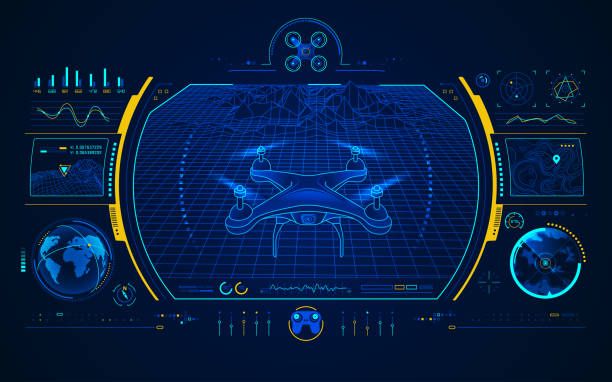In recent years, the use of drones by police forces and homeland security agencies around the world has seen a significant surge. These emerging drone technologies are changing the landscape of law enforcement, offering innovative solutions for surveillance, search and rescue operations, disaster management, and more. This article explores the various ways in which drones are being employed, highlights some compelling case studies, discusses the challenges associated with their use, and outlines the steps that policymakers are taking to overcome these challenges.

The Rise of Drone Technology in Law Enforcement and Homeland Security
-
- Surveillance and Reconnaissance: Drones equipped with high-resolution cameras and thermal imaging technology are revolutionizing surveillance efforts. They allow law enforcement agencies to monitor large areas from the sky, improving situational awareness and enhancing public safety.
- Search and Rescue Operations: Drones play a crucial role in search and rescue missions, helping to locate missing persons quickly and efficiently, even in challenging terrains or disaster-stricken areas.
- Border Security: Many countries are using drones to strengthen border security. These unmanned aerial vehicles can patrol remote areas, detect illegal border crossings, and monitor potential threats.
- Disaster Management: Drones are invaluable during natural disasters, such as hurricanes, wildfires, and earthquakes. They can assess damage, locate survivors, and guide emergency responders to affected areas.
Case Studies
-
- Los Angeles Police Department (LAPD): The LAPD implemented drones for aerial surveillance during high-risk operations and major events. These drones helped officers gather critical information while minimizing risk to personnel.
- Texas Department of Public Safety: Texas employed drones to monitor its vast border with Mexico, significantly improving the efficiency of border security operations and reducing the cost of patrolling remote areas.
- Nepal Earthquake Response: In the aftermath of the 2015 earthquake in Nepal, drones were used to survey the affected regions, assess damage to infrastructure, and locate survivors in remote villages.
Challenges in Drone Technology Implementation
While the use of drones in law enforcement and homeland security offers numerous benefits, it also presents challenges:
-
- Privacy Concerns: Drones can intrude on individuals’ privacy, leading to concerns about surveillance and data collection. Striking a balance between public safety and privacy is a complex challenge.
- Safety Regulations: Ensuring safe drone operations in populated areas requires strict regulations and protocols. Incidents of drones interfering with manned aircraft highlight the need for comprehensive safety measures.
- Data Security: Protecting the data collected by drones from cyber threats is essential. Unauthorized access to surveillance data can have serious consequences.
Policymaker Initiatives to Address Challenges
- Privacy Guidelines: Policymakers are working to establish clear guidelines on the use of drones, emphasizing the importance of obtaining warrants and respecting individuals’ privacy rights.
- Regulatory Frameworks: Governments are developing comprehensive regulatory frameworks for drone operations, including licensing, training, and safety standards.
- Data Encryption and Storage: Efforts are being made to enhance data security through encryption and secure storage methods to protect sensitive information collected by drones.
- Public Engagement: Policymakers are involving the public in discussions about drone use to ensure that their concerns are considered in the development of regulations and policies.
Conclusion
Emerging drone technologies have become indispensable tools for police forces and homeland security agencies worldwide. They provide innovative solutions for a wide range of applications, from surveillance to disaster management. While their implementation presents challenges, policymakers are actively addressing these issues to ensure that the benefits of drone technology can be harnessed while protecting individual rights and maintaining safety and security. As technology continues to evolve, drones are likely to play an even more significant role in the future of law enforcement and homeland security.
Sources:
- The Use of Drones in Law Enforcement
- Drones in Homeland Security: Opportunities and Challenges
- Drones in Disaster Response: A Review of Regulations, Technology, and Use Cases